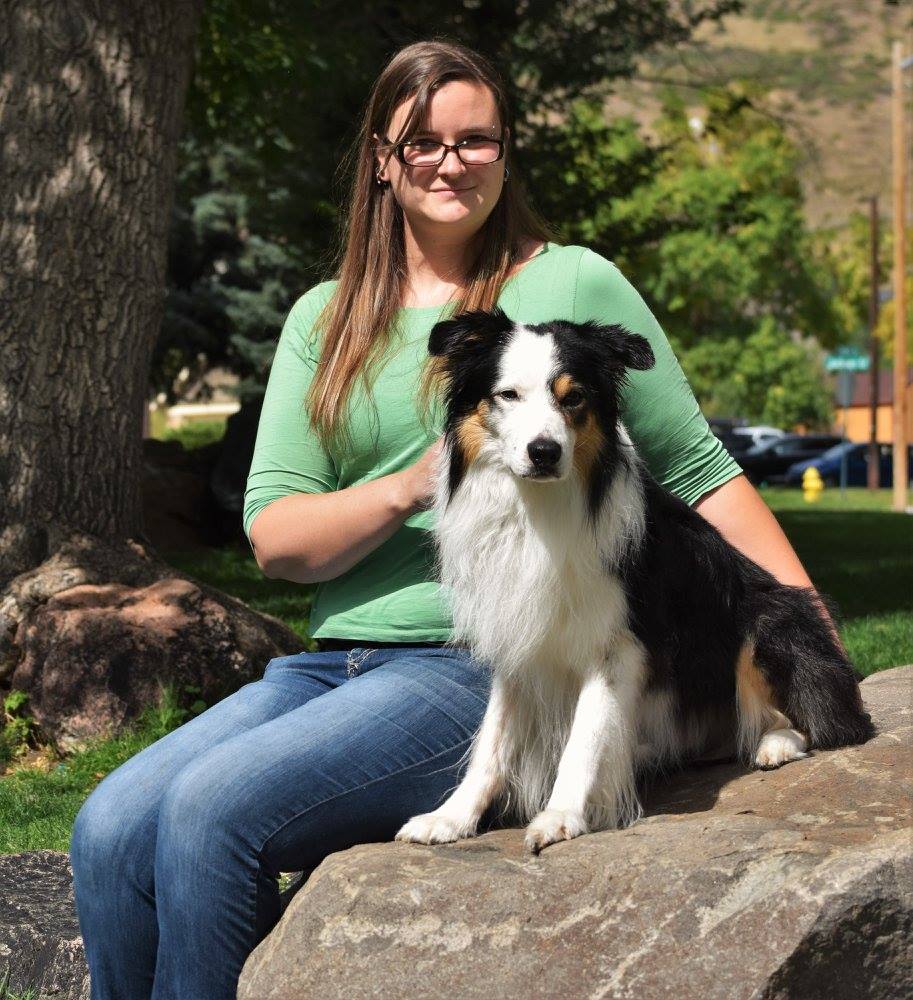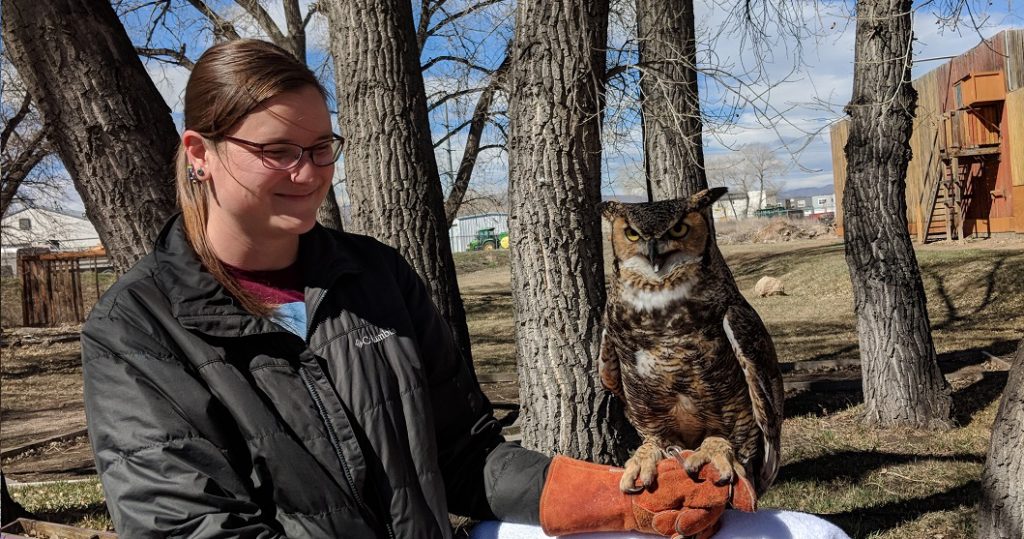Guest post graciously submitted by Megan Wallace B.S., CPDT-KA, CNWI, owner of Dogs Deciphered LLC.
Dog training is a people-centric business, which can be a bit of a shock for new trainers who got interested in the field because they prefer dogs to people. I’ve yet to meet a dog with a checkbook, which means that our clients are the people, and we are providing them with a service, which is educating them in how to train their dog. I am totally obsessed with dogs, and think they are the most amazing creatures ever, however I got into dog training for the people. The way I see it, if my goal is to help as many dogs as possible, I will never achieve that goal on my own. I can’t keep enough dogs in my own home to make any significant change to the dog population as a whole. So, I have to connect with the guardians of my favorite beings on the planet, people. In helping them to find understanding with their dogs, I have helped more dogs, because their current and future dogs will benefit from that information. If they cannot process the information, or aren’t successful with it, I haven’t accomplished my goal.
 I wanted to take my goal a step further and help other trainers be more successful, thus helping even more dogs. I came to recognize that other trainers are not always successful in connecting with clients. This leaves them feeling frustrated with their jobs, as they are unable to help the dog. Sometimes, this leads to blaming the client – they aren’t compliant, they don’t practice, they don’t listen, and so on. I believe it is up to us as trainers to discover why they are struggling, and take on the challenge of helping them to succeed. People are complicated beings with a variety of circumstances, experiences, and motivations. Your job is to help with one aspect of their lives, their dog’s behavior.
I wanted to take my goal a step further and help other trainers be more successful, thus helping even more dogs. I came to recognize that other trainers are not always successful in connecting with clients. This leaves them feeling frustrated with their jobs, as they are unable to help the dog. Sometimes, this leads to blaming the client – they aren’t compliant, they don’t practice, they don’t listen, and so on. I believe it is up to us as trainers to discover why they are struggling, and take on the challenge of helping them to succeed. People are complicated beings with a variety of circumstances, experiences, and motivations. Your job is to help with one aspect of their lives, their dog’s behavior.
What Can You Gain?
There are several benefits to improving your feelings toward your clients, starting with greater job satisfaction. The more you like your clients, the more you want them to succeed, which makes you work harder at your job. You will improve your client communication, because you are working toward gaining empathy with your clients. Again, the better you communicate, the more success your clients will have. This is a positive feedback loop that benefits everyone, you, the client, and the dog(s). All of this will result in better results, and increased word of mouth. People don’t tell their friends and neighbors about services that were just satisfactory, they tell them about services that shined in client communication while providing results. Being able to work with, and succeed with “difficult” people, whom others might struggle with reaching, gives you a competitive edge in your market. By using the framework described in this article, you can become comfortable with conflict, which is a special skill set in working directly with people.
Understanding Your Clients
There is a reason a prospective client contacts you, and these reasons vary greatly. The clients we all tend to love are the proactive sort. “I just adopted this dog, I’d like to start training right away” sounds so much more inviting than “If you can’t help us, we will have to get rid of the dog!”. It’s important to remember that many people have more reasons not to call than to call. People wait to reach out for help for a number of reasons, finances being the top of the list. Other reasons that might delay first contact include:
- Scheduling restrictions
- Embarrassment
- Unsuccessful attempts to contact a different trainer
- Have tried training before and felt unsuccessful
- Lack of resources (no one to ask who to call for help)
- Disagreement within the family regarding the dog
- Health issues
- Belief they can solve the problem through internet advice
Clearly there are a lot of reasons people may choose to delay seeking professional advice in helping their dog. Very rarely is the reason “doesn’t care about the dog”, yet that seems to be how some trainers perceive this delay. The information given to you at first contact can shape your attitude toward that client, but you should be cautious to let it do so, because it often doesn’t tell the whole story. Remember that upon first contact, your client may be under a good deal of stress. Be forgiving of any information they give you, including actions they might have taken against their dog. They are currently operating with a lack of knowledge, and you are just the person they need.
 Depending on whether you do in-home training, or facility based training, you may be able to tell more or less about your client’s life circumstances. I have found this to be absolutely no indication of how dedicated a client will be, so this information is to be taken in without judgement. However, having a feel for whether a client has a limited income vs. money to spare can help you to communicate in a way that is empathetic toward their situation. Suggesting cost effective options for some of the equipment and enrichment items they might need will go a long way to helping someone who saved up for your training package feel like they can accomplish their goals. Other clients may be more than willing and able to buy anything that might help them, and will appreciate you suggesting the top products on the market.
Depending on whether you do in-home training, or facility based training, you may be able to tell more or less about your client’s life circumstances. I have found this to be absolutely no indication of how dedicated a client will be, so this information is to be taken in without judgement. However, having a feel for whether a client has a limited income vs. money to spare can help you to communicate in a way that is empathetic toward their situation. Suggesting cost effective options for some of the equipment and enrichment items they might need will go a long way to helping someone who saved up for your training package feel like they can accomplish their goals. Other clients may be more than willing and able to buy anything that might help them, and will appreciate you suggesting the top products on the market.
Other questions that will help you to understand why a client might be frustrated, angry, or disengaged from the training process include:
- How long have they been dealing with this situation?
- What is their lifestyle, and how does the dog fit into it?
- What is their previous dog experience? What about training experience?
- How is the behavior affecting the client’s everyday life?
I find it is important when you meet a client for the first time to get a sense for how much time and energy they are able and willing to put into trying to change their dog’s behavior. Try to formulate an answer for this question without judgement. Remember, the reasons that limit people from committing more time or money to their dog rarely include “I don’t care about the dog”. If you can tailor your own expectations, and the client’s expectations to fit the amount of work that can be done, you will both be happier in the end. Be creative in thinking of options for those who can’t afford to buy a large training package, or have difficulty finding the time to train. Often, if you can get them started and they see results, they will continue to make training a priority.
Developing Empathy
Empathy is the ability to understand another person’s experience by imagining yourself into that experience. This is a skill that most of us started developing as a child, gaining more understanding as we experienced more of the world. Some people hold the false belief that “you are who you are” when it comes to your ability to empathize with others, but we know that dogs can change strongly ingrained behaviors, and so can we! Learning to empathize takes a willingness to change, and think past your own experience.
The most important thing about using an empathetic approach is listening to what your client has to say. Listening is also a skill that needs to be developed, and active listening is important to empathizing. Acknowledging what your client has told you, “It sounds like you are feeling very frustrated about Fluffy’s behavior” helps them to feel heard. If you don’t understand what your client is saying, ask them to clarify. The easiest way to understand someone else’s experience is to ask them about it! Watch their body language to see if they feel comfortable or concerned, so that you can respond appropriately.
If you find yourself disagreeing with a client, consider their perspective, and evaluate your own attitude. It may be that they don’t have enough information to make an informed opinion, or their personal experience is clouding their ability to understand the bigger picture. However, it could also be that you are overly focused on being “right”, and that by opening your mind to other possibilities you could reach some understanding. An important part of empathy is recognizing and accepting that your perspective is not shared with every other person.
Our clients are not purposefully doing things wrong. There is a ton of information, and misinformation, out there about changing dog behavior. We can’t expect our clients to be masters of wading through this information to find only the best sources. Often people’s choices are influenced by friends or family member’s recommendations, or the top results brought up by a search engine. What they have done in the past should not influence our feelings about them as people, because they didn’t know they were following bad advice.
Developing empathy with our clients includes active listening, considering the other person’s perspective, keeping your self open to new ideas, and recognizing that people’s behavior is based on the information they have, which may be incorrect or limited. Your goal is to help the client feel heard, and to approach any disagreement from an understand place.
People Are Fascinating!
The human race is incredibly diverse in culture, experience, and attitudes, and as dog trainers we get to see a decent cross-section of our communities. There are so many different stories of how people have come to live with dogs, and despite their struggles, they are really trying to do so successfully. Allow yourself to be fascinated by the people you meet. These people have invited us into their lives, their homes, and their struggles. We can honor that by being interested in their lives, and helping to improve things as they relate to the dog.
Many trainers love to solve difficult problems with dogs, and why should more difficult clients be any different? Our job is to change behavior, and the same principles apply to people learning as to dogs. We are quick to break things down for a dog who is struggling to learn a new task, so we should do the same for a struggling client. You will get the same feeling of accomplishment when your client performs a difficult skill as when their dog does the same. Give your clients achievable goals, and don’t make them goals that you could achieve, they aren’t dog trainers! With clients who are struggling to make training a consistent habit, here’s an achievable goal – ask them to count out 5 treats before each meal (it could even be pieces of kibble) and practice one of the exercises 5 times. Learn about habit making and make it your goal to help your clients start new habits.
Lastly, people are very complex, which often means our first assumptions can be way off. This is especially true with email or text contact, because meanings can easily be misconstrued, and inflection is lost. Give people the benefit of the doubt, and allow yourself to get to know the person over time. Sometimes we get stuck in the idea that a client is going to be difficult because of something they said in their first contact call or email, but there are so many reasons that could be a poor representation of them as a person. Often people don’t reach out until something bad has happened, and they are likely processing that event. Other people are just not great at communicating by phone or email, but do much better face-to-face. Don’t hold on to your preconceived notions, there is a lot at play here, most of which doesn’t relate to you.
In Conclusion
Dog trainers are also people trainers, and we need to take that part of our job seriously. You should be spending time learning about interacting with people and developing your own skills. Your communications will improve when you understand your client’s circumstances, what they have been dealing with, and how it is affecting their lives. You aren’t going to agree with everything a client says or does, but you have to accept that you aren’t going to change their views on everything. Giving them as much information as they can digest gives them the tools they need to do better. An empathetic approach helps you to navigate these waters of changing or influencing human behavior. By considering your client’s perspective, you can work through conflict, and more effectively recommend solutions to their problems. Finally, take a moment to appreciate how fascinating people are! Just think about some of the stories you’ve heard in your time as a dog trainer, it’s likely you have some doozies. Find delight in the differences between people, and in finding creative solutions to helping them. You will find yourself more satisfied with your job, less stressed, and more successful by finding the joy in your clients.
About the Author




